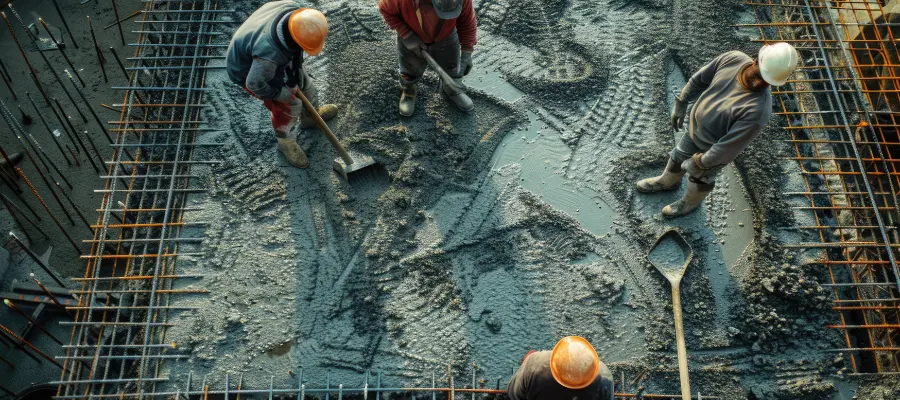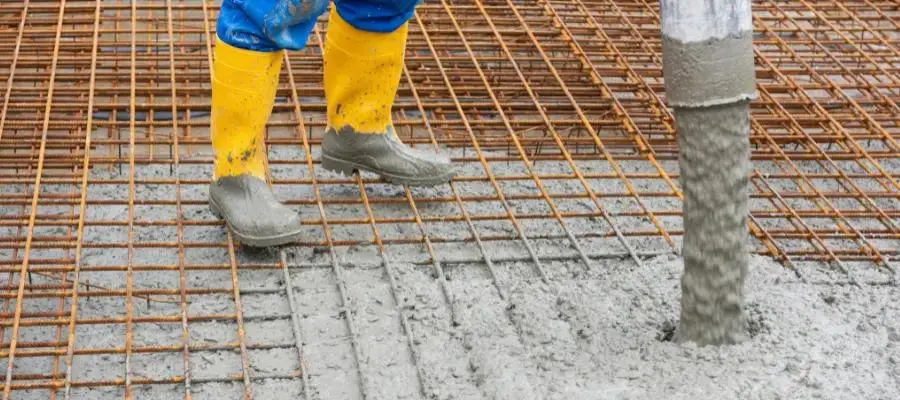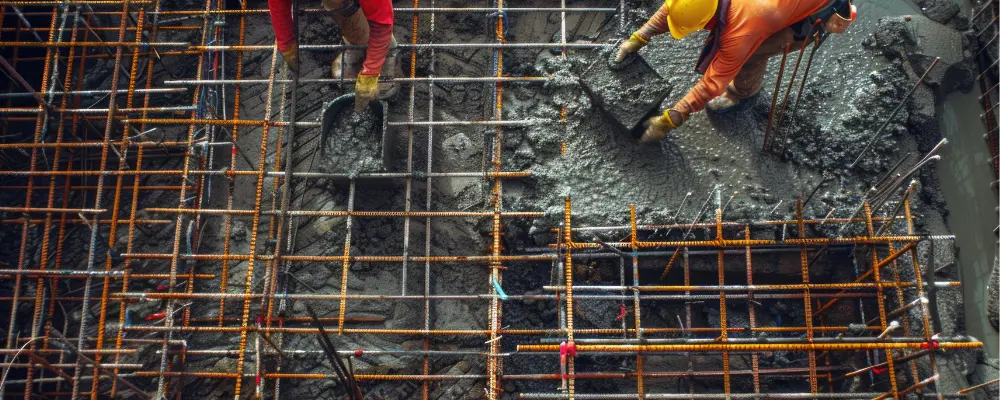Are you considering constructing a new house, or are you interested in construction technology? Then, you must know about reinforced concrete. Usually, you call it RCC. In the field of civil engineering, reinforced cement concrete (RCC) is the mainstream. In modern architecture and construction, RCC is the major element for durability, load-bearing capability, and longevity.
In today’s Brick & Bolt blog, you will explore reinforced cement concrete structures, or RCC structures, including their types, benefits, limitations, innovations, and construction methods.
What is Reinforced Cement Concrete (RCC)?
Reinforced cement concrete- RCC, is the building material. It’s more stable than traditional concrete. This concrete is made with reinforcing bars or steel rebar mesh along with cement, sand, aggregates, and water. The steel rebar or reinforcing bar helps to distribute stress and pressure evenly throughout the material. This makes the RCC less likely to shatter or crack under stress and more strong to tensile loading in reinforced cement concrete structure construction.
Different Types of Reinforced Cement Concrete (RCC)

The following are major RCC types used in reinforced cement concrete structure construction:
- Steel-Reinforced Concrete
- Fibre-Reinforced Concrete
- Pre-Stressed Concrete
Steel-Reinforced Concrete
In this type of RCC, steel reinforcement is embedded to hold the concrete together. It prevents large cracks and adds overall strength. The major use of steel-reinforced concrete is to combine the compressive strength of concrete with the tensile strength of steel to carry heavy loads, such as footings, foundation walls, and columns, driveways with heavy traffic, carport floors, and large shed floors.
Fibre-Reinforced Concrete
Fibre-reinforced concrete is generally used in pavement overlays and for new construction. It is prepared with a combination of cement, sand, aggregates, water and other fibrous materials, such as glass fibres. Using steel or alternative fibre in preference to steel rods for reinforcement can reduce the overall cost. Fibre-reinforced concrete is used in prefabricated concrete structures, concrete reactor pressure vessels, blast-proof structures, machine frames, tunnel liners, and thermal impact-resistant structures.
Pre-Stressed Concrete
Pre-stressed concrete is a highly advanced type of reinforced concrete that combines the strength of concrete and steel to prevent cracking and reduce brittleness. This is achieved through a process called pretensioning, where high-strength steel is stretched before concrete is poured around it and allowed to harden.
The benefits of pre-stressed concrete include:
- High compressive strength
- No tension cracks
- Reduced corrosion
- Lower shear stress
- Lighter weight
Advantages of RCC Structures Construction
- Compared to other building materials, reinforced cement concrete holds better compressive and tensile strength. This is mainly because steel elements are used in production.
- RCC-built houses and buildings are more durable than other buildings.
- Although the initial construction cost might be higher than others, RCC structures or buildings will have long-term benefits and low maintenance costs.
- Reinforced cement concrete structures have better fire resistance than steel structures.
Limitation of RCC Home Construction
- One of the common issues in RCC buildings is the potential for shrinkage after hardening, which can lead to strength loss or the development of cracks. This highlights the importance of understanding and addressing this issue during the construction process.
- Numerous steps are involved in constructing an RCC building, such as casting, mixing, and curing of concrete. However, if these steps are not conducted properly, the RCC’s final strength may be altered.
- Installing and removing RCC formwork before and after pouring concrete will cost extra.
Innovations of RCC Building Constructions
- Green Concrete: Incorporating recycled materials, sustainable materials, and eco-friendly additives into reinforced cement concrete production will be a more sustainable building practice.
- 3D Printing: The application of 3D printing technology to produce complicated RCC structures with great precision and minimal material waste.
- Self-Healing Concrete: Innovations in materials now enable concrete to self-repair tiny cracks and damage, thereby prolonging the life of RCC constructions.
Methods of Reinforced Cement Concrete Structure Construction

RCC construction methods commonly involve the following major steps:
- Layout
- Mixing
- Reinforcement Work
- Formwork
- Pouring Concrete
- Curing
1. Layout
To build RCC elements like RCC columns/pillars at the construction site, the layout must be surveyed and marked with grid lines for column marks.
2. Mixing
Proper mixing of cement, aggregates, water, and admixtures to get the desired concrete strength and consistency is very important. This can be achieved on-site or by using ready-mixed concrete.
3. Reinforcement Work
Reinforcement involves placing steel bars (rebars) or mesh within the concrete to provide tensile strength and improve the overall structural integrity. The process involves cutting and bending steel bars to the required length to fit into the design specification. Positioning the rebars within the formwork according to the structural drawings. Securing the rebars with binding wires to maintain their position during concrete pouring
4. Formwork
An integral part of the construction process is the building of temporary molds to hold the concrete in place until it hardens. Formwork, whether made from timber, steel, or plastic, is not just a tool, is used to shape and support the structure during the curing process.
5. Pouring Concrete
Pouring the concrete into the formwork can be done manually or with the help of a pouring machine or pump. The appropriate type of compaction of the concrete should be performed properly to remove air bubbles or voids and ensure uniform distribution. The compaction of concrete can be mechanical, with vibration, or by using self compacting concrete.
6. Curing
You have to allow the concrete to harden. Different curing methods can enhance its strength over time. By keeping it moist or using curing compounds, you can avoid cracks and ensure its durability.
Conclusion
Reinforced cement concrete is a versatile and durable building material in modern construction. Its combination of concrete’s compressive strength and steel reinforcement’s tensile strength makes RCC structures extremely durable and long-lasting. While initial costs may be higher, the longevity and low maintenance requirements of RCC offset this over the lifetime of the structure.
If you desire long-lasting and durable RCC construction, choose Brick & Bolt. As a leading construction service provider in India, Brick & Bolt offers extensive expertise to bring your project to life. Refer to their comprehensive house construction cost guide to plan your budget effectively. They can guide you in choosing the appropriate construction materials and designing house floor plans. Additionally, you can easily estimate your building costs with our exclusive building cost estimator tool.

